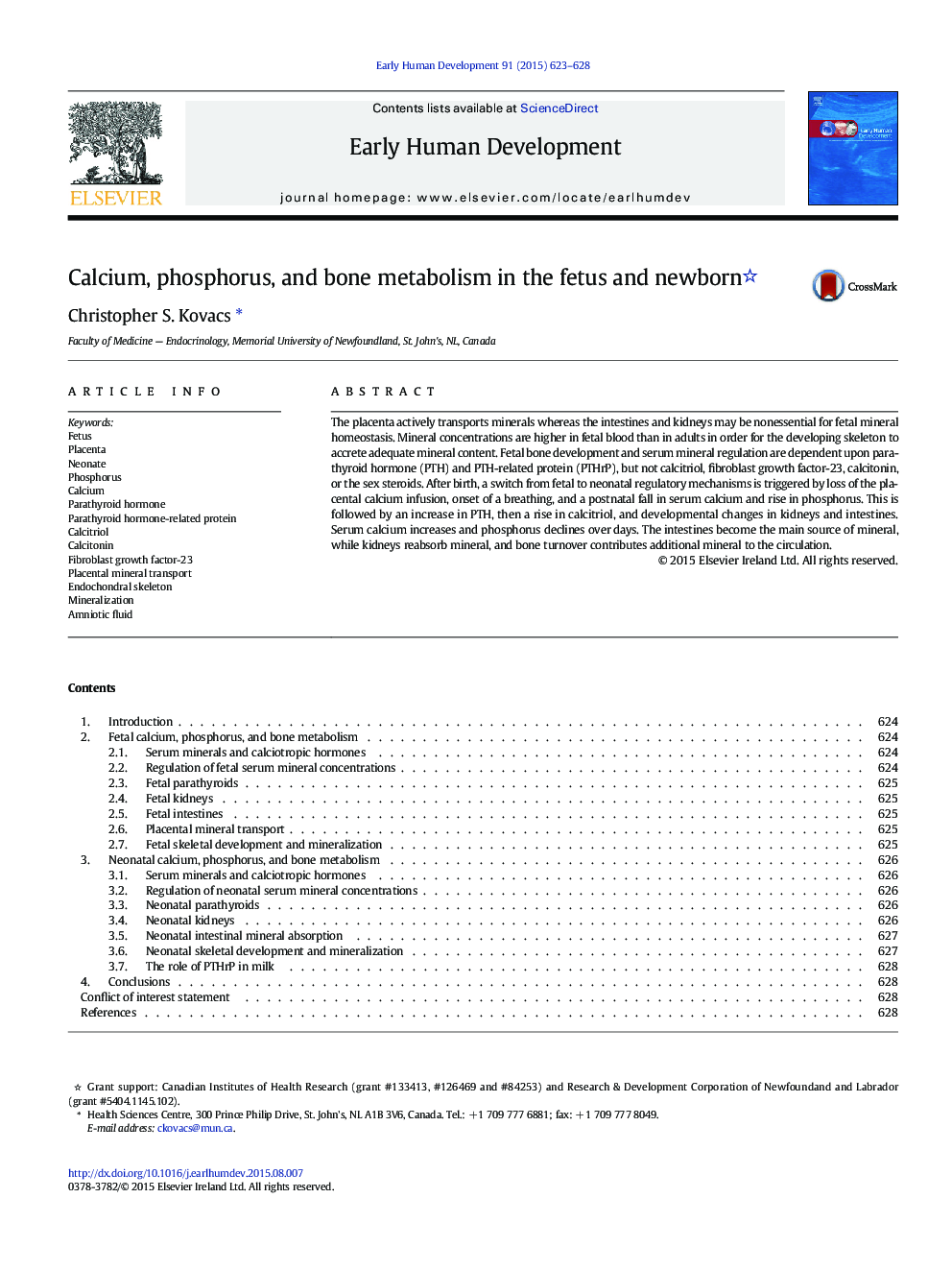| Article ID | Journal | Published Year | Pages | File Type |
|---|---|---|---|---|
| 6171781 | Early Human Development | 2015 | 6 Pages |
The placenta actively transports minerals whereas the intestines and kidneys may be nonessential for fetal mineral homeostasis. Mineral concentrations are higher in fetal blood than in adults in order for the developing skeleton to accrete adequate mineral content. Fetal bone development and serum mineral regulation are dependent upon parathyroid hormone (PTH) and PTH-related protein (PTHrP), but not calcitriol, fibroblast growth factor-23, calcitonin, or the sex steroids. After birth, a switch from fetal to neonatal regulatory mechanisms is triggered by loss of the placental calcium infusion, onset of a breathing, and a postnatal fall in serum calcium and rise in phosphorus. This is followed by an increase in PTH, then a rise in calcitriol, and developmental changes in kidneys and intestines. Serum calcium increases and phosphorus declines over days. The intestines become the main source of mineral, while kidneys reabsorb mineral, and bone turnover contributes additional mineral to the circulation.
